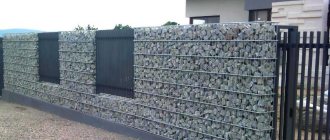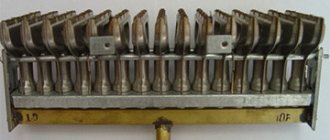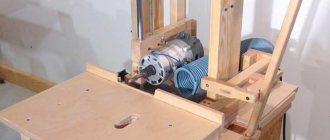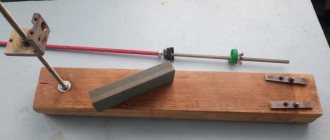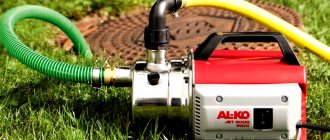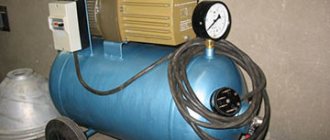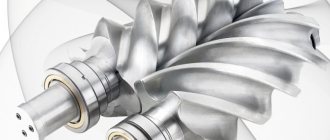Compressor equipment is usually used in conjunction with a device such as a dehumidifier.
There are no high-tech elements in it, so a simple version with mediocre characteristics can be made independently.
Let's see how and from what you can make a moisture separator for a compressor with your own hands.
Purpose of a moisture separator in compressors
To organize the correct operation of a pneumatic tool, a very important indicator is the purity of the compressed air that is supplied to it. First of all, it must be cleaned of dust. To clean mechanical contaminants, an air filter is used, installed at the inlet of the unit. It is also necessary to remove moisture from the air masses, which, when compressed, condenses in the receiver and in the system itself. To remove moisture, an air dryer is installed at the compressor outlet . In addition to moisture, compressed air may contain oil particles, which inevitably fall into it.
On a note! Mixing oil with air during its compression is typical for air piston and rotary (screw) compressors, since the operation of these units requires the presence of lubrication.
If the air is not cleared of moisture, the following happens:
- when moisture is mixed with oil, an emulsion is formed, which can clog the pneumatic channels;
- at low temperatures, moisture in the pneumatic channels freezes, which can cause blockage or damage;
- Rust accumulates in the air ducts, which over time can completely block the air supply;
- when moisture gets into a pneumatic tool, its parts begin to rust and quickly fail;
- the resulting air-oil mixture in its composition cannot meet the requirements for its use in the food, electronics, pharmaceutical and chemical industries;
- in the presence of moisture, high-quality painting of, for example, cars becomes impossible, since the paint will not lie tightly, with the formation of bubbles, which will cause it to peel off.
Practical recommendations for creating different types of dehumidifiers
At first glance, it seems that making a dehumidifier with your own hands is not difficult. But if the work is done poorly, some of the moisture will enter the compressor and have a negative impact on the quality of the paint. The most important practical tips include the following:
- The unit housing must be sealed and withstand high pressure.
- To connect the pipes, you need to use high-quality welding or soldering.
- The diameter of the inlet and outlet openings must be sufficient for the unobstructed passage of air.
- A homemade dehumidifier must meet all the requirements of the compressor unit in terms of pressure, power and efficiency.
Video: making a dehumidifier with your own hands
Design and principle of operation of the part
The design of a standard vortex type water separator for pneumatic systems is shown in the figure below.
This node consists of the following elements.
- Frame. It is attached to the pneumatic line and is the basis for the entire water separator.
- Cup. Forms an internal cavity in which the deflector (3), filter (4), damper (5), plug (7) and impeller (8) are located.
The operating principle of the moisture separator is quite simple. After compressed air enters the housing (1), it moves towards the impeller (8). Once on the impeller, which has guide blades, the air swirls. Under the influence of centrifugal force, all particles in the air move to the walls of the glass (2), where they condense and roll down. To separate the quiet zone in which contaminants are located (6), a damper (5) is provided. Next, the air flow enters the deflector (3) with an installed filter (4), which traps small solid particles of contaminants. Accumulated contaminants are removed through a stopper (7) installed at the bottom of the glass.
Types of air purification systems
To clean compressed air, both for industrial and domestic purposes, several types of moisture separators are used: vortex, moisture-oil separators, adsorption and modular cleaning systems.
Vortex filters
A vortex-type moisture-oil separator has a cylindrical shape (the device was discussed above) and purifies the air by swirling it in a chamber (glass). The vortex oil separator is the most common device for cleaning compressed air from moisture and lubricant particles.
Adsorption moisture-oil separators
To remove oil and moisture from compressed air, substances with active absorbing properties are used, for example, silica gel, aluminum gel, calcium chloride, etc. The following figure shows an adsorption-type oil and moisture separator.
Modular cleaning systems
The best results in removing condensate, oil particles and dust from the air are provided by a modular cleaning system . It consists of several elements: a cyclone (vortex) separator, a fine filter and a carbon filter. The following figure shows a modular type oil water separator.
Important! Modular systems ensure, at the last level of purification, almost one hundred percent purity of technical air, which is supplied to blow guns, pneumatic tools, spray guns and respirators (without a carbon filter).
Advantages of cyclone type filters
Water separators greatly simplify the operation of an air gun and compressor. They ensure stable operation of the equipment. The following advantages of cyclone type filters can be highlighted:
- simple design;
- reasonable cost;
- maximum efficiency;
- retention of large condensate particles;
- simple maintenance;
- regeneration and complete restoration of original properties;
- providing preliminary rough cleaning.
Dehumidifiers for compressors and air guns are an effective tool, without which it is impossible to imagine the operation of this equipment. They qualitatively prepare compressed air for further use. Filters separate primary moisture, oil particles, as well as contaminants of various fractions and other solid particles. Any pneumatic network must be equipped with a moisture separator that will clean the air for further use.
“>
Key equipment characteristics
The scope of application of moisture-oil separators is quite wide, so when choosing a model it is worth immediately identifying its specific goals and objectives: servicing MAZ / KAMAZ class vehicles, pneumatic tools or other devices that require high-quality filtration.
If we take into account the equipment for working with paints and varnishes on pneumatics, then the need for expanded throughput disappears. Here it is much more practical to look towards equipment with fine filters. While for production needs good permeability is required, and the micron indicator for cleaning fades into the background. The latter depends on the size of the fraction. It is more logical to use industrial options for high-quality water treatment. In this case, small particles with a size of about 5 microns are cut off. Classic solutions are mostly equipped with filter systems, the fraction of which fluctuates around 15 microns.
Industrial dehumidifier
Special attention should be paid to the maintained pressure indicator. Separators for compressor equipment in the mid-budget segment offer a level of 7 bar. This parameter has a lesser effect on the final result, but the filter must correspond to the output of the unit, otherwise the efficiency will noticeably decrease, as well as labor costs will increase.
When choosing a separator, it is imperative to compare the load and power indicators at the moment the compressed air moves inside the equipment. It is also necessary to take into account the features of a particular tool, namely, the diameter of the connections. It can be 1/8, 3/4 or the rarer 3/8. There are also exotic options for some specific needs.
Best models
The market offers a wide range of solutions of different formats and brands, and it is very easy to get confused. The list below includes the most popular representatives of the segment, which received a large number of flattering responses from consumers.
Wester 816-002
This is an air filter with a working pressure of 10 atmospheres and a full-fledged air preparation unit. The diameter of the input connections at both ends is 1/4F. A pressure gauge is provided to visualize the readings. The system also includes a lubricator and a gearbox.
The device holds the built-up pressure well, and the pressure gauge does not lie, like with more affordable solutions. The build quality is also at a high level: no gaps, backlashes or other design defects were noticed. The cost of the separator is around 2500 rubles.
Zitrek SAW 3000-02 D FR 1/4 M
The model can be used as a moisture-oil separator or filter. This solution worked well in tandem with pneumatic tools. The air filter does a good job of fine cleaning and, if necessary, can be easily replaced with a new one.
The universal connection diameter is 1/4M. There is a fairly accurate pressure gauge, as well as automatic condensate drainage. The device holds pressure well, but in the absence of it it begins to rattle a little. The cost of the device is about 1000 rubles.
Pegas EC5000-06
This is a serious model with good returns and an appropriate price. The device effectively cleans the incoming air from solid particles and droplets of moisture. The device automatically maintains pressure at the level specified by the user, while simultaneously removing accumulated condensate.
The system includes an oil sprayer, a moisture separator and a pressure gauge. The latter boasts high accuracy. The diameter of the connections is 3/4. The device can withstand pressures of 15 bar and temperatures up to +60⁰С. The cleaning quality is within 25 microns. The cost of the model is a little more than 6,000 rubles.
Licota PAP-C207B
This is a three-level separator with fine cleaning. The device filters compressed air, effectively removing oil and moisture.
The degree of purification for each level is different - 5, 0.3 and 0.01 microns. This approach leaves no chance for pollution, allowing for air purity of almost 100%.
The system includes a pressure regulator with an accurate sensor and an automatic cleaning valve for accumulated condensate. The need to replace the filter elements will be indicated by granules that turn pink. The cost of the device is appropriate - more than 9,000 rubles.
AIST 91030354
The unit includes a separator, lubricator and pressure regulator. The model has proven itself well when paired with a pneumatic tool, filtering the air coming from the compressor. The operating pressure is within 10 bar with a throughput of 4500 l/min.
Additionally, there is an adjustment of the oil supply speed, as well as automatic removal of accumulated condensate. There are no complaints about the quality of the assembly: all elements fit tightly to each other and do not play. The model fully justifies its cost, which is almost 7,000 rubles.
Why are dehumidifiers needed?
One of the main characteristics of compressed air quality is its humidity. Dryers are used as additional equipment that removes excess water. Helps to increase the operating efficiency of compressor units and save costs on their maintenance.
The devices are equipped with special tanks for collecting discharged condensate, which prevents corrosion in the condenser. Liquid droplets form when steam comes into contact with cooled surfaces. Industrially manufactured dehumidifiers operate automatically and are made from environmentally friendly materials and raw materials. Available in a wide range of models for different operating pressures. Under special conditions of air preparation, devices that utilize moisture from the air maintain the operation of compressor equipment at a high level.
Read also: The most popular semi-automatic welding machine
The functions of the dehumidifier are aimed at preventing:
- air pollution with harmful substances, incl. traces of oils;
- rust formation;
- pressure drop;
- air passage;
- formation of solid residue in the compressor flow system;;
- deterioration of the commercial properties of the final product and defects;
- failure of pneumatic systems and subsequent expensive repairs.
How to make a dehumidifier with your own hands
Since the design of the dehumidifier does not include high-tech elements, it is quite possible to make an air dryer for compressors with your own hands from scrap materials.
Cyclone (vortex) water separator
A cyclone-type moisture separator can be made from a liquefied gas cylinder, an unnecessary fire extinguisher, or a piece of metal pipe of a suitable diameter. The length of the pipe can be arbitrary.
The device is made in the following order.
- Drill a hole in the bottom of the body and weld a regular faucet. It will serve to drain the condensate accumulated in the container. Below is a drawing of a homemade vortex moisture separator, according to which this device can be made from a metal pipe.
- An outlet fitting should be welded into the upper part of the housing.
- A hole is made in the lower part of the pipe (cylinder) (at least 150 mm from the bottom) and the inlet fitting is welded so that the air enters the container tangentially. Due to this, a turbulence will occur in the container, helping to clean the flow from contaminants.
- Next, 3 legs equipped with nickels (for stability) must be welded to the body.
- If desired, the resulting device can be painted.
Advice! For proper operation of the device, it must be installed vertically.
Homemade adsorption dehumidifier
You can easily make a homemade dehumidifier using a water filter and silica gel cat litter.
You will also need a small tube made of metal or plastic and a glue gun.
The condensate air purification filter is made as follows.
- Cut the tube long enough to fit into the lid and reach the bottom of the filter.
- It is necessary to drill several holes in the tube through which compressed air from the compressor will pass.
- You need to insert a plug at one end of the tube so that when lowered into the silica gel it does not clog.
- The upper end of the tube must be inserted into the filter cover and the connection must be sealed using a glue gun.
- A mesh must be installed at the top of the tube or in the cover to prevent filler from entering the air duct.
- Next, you should pour the silica gel filler into the flask, insert a tube with a lid into it and tighten it well.
Now you can connect a hose from the compressor to the inlet fitting of the moisture separator, and a hose leading to some pneumatic tool, for example, a spray gun, to the outlet.
Adsorber
Among the many materials that absorb moisture well, silica gel has excellent properties. You can buy it in stores in its pure form or in the form of litter for pets.
To calculate the volume of the required amount of this substance, you can use the following formula - for every 800 liters of air per minute you will need about 1 kg of silica gel.
A water filter can be used as a container for placing the sorbent.
